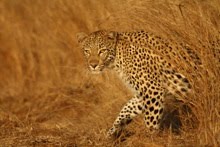Last year I was grappling internally with some philosophical questions concerning our right to be on this planet and how we treat her and our fellow occupants. The result was an essay of metaphor on the majestic African Elephant. I hope you enjoy it and please,
don't miss the punch line.
don't miss the punch line.
Live like an elephant
Have you ever seen an African Elephant? In the wild? Well, I’ll tell you this, it is one of the most remarkable creatures I have ever had the honour of experiencing. To look in to the eyes of a large cow is to look in to a big pool of emotions. Friends have described the experience as being like looking in to one’s own soul. Or, to be witness to great understanding. But that isn’t really what this story is about.
Think of an elephant living in harmony with all the other creatures on a wide African plain. Your picture probably looks like something from Discovery Channel; the grass is brown, dotted with large acacia or marula trees, there may even be a small group of zebra feeding in the background, and let’s throw in some giraffe for good measure. Idyllic. And that is exactly how the elephants come across as they stroll across grassy plains in their slow, languid manner. You may see them eating grass, or leaves from high up in a tree. But what you may not be aware of is that they have a penchant for bark. They allot great proportions of their day to it; breaking off branches, stripping trunks and pushing down entire trees.
This paints a very different picture of the African Elephant. They can be extremely destructive, changing woodland into open habitat in just a few years. It is fascinating to watch an elephant push down a foot-broad tree, just to take a mouthful of bark, or leaves from the top branches and then continue on its way. And, the notion of fluffy animals living in harmony with their environment fast becomes ludicrous when one spends some time with elephants.
The world famous Kruger National Park, in northern South Africa, is large. In fact, its 19000km2: the size of a small country (like Wales). Interestingly, the number of large mammals in the park is relatively stable, i.e. populations are self-regulating. The one notable exception is the elephant. Current scientific belief is that an elephant population exceeding about 7000 individuals will threaten the survival of raptor and stork species that are reliant on large trees for nesting. Elephant numbers were controlled at this level until 1994 when culling was stopped. There are now close to 13000 elephants in Kruger National Park. (An incredible sight!) Herein lies the debate: What should be done about Kruger’s elephant population and what will be the consequences of managerial decisions?
The first option is to artificially control elephant numbers. This has traditionally been done using an anaesthetic dart delivered by a veterinarian from a helicopter, followed by a lethal injection administered from the ground. This has sparked an extremely emotional debate with animal rights activists shouting ‘murder’, and supporters of culling cautioning that unchecked elephant numbers could result in a ‘holocaust’ among other species. Culling operations can successfully maintain elephant numbers at a low enough level that their overall impact on habitat is limited. Ecologically, this is a fairly logical conclusion. But that doesn’t dry my tears.
But what would the ecological consequences be if elephant numbers were not controlled? The elephant is a vastly adaptable species, found in dessert, grasslands, savanna, and tropical jungle. Three hundred years ago there were a lot of elephants in Africa, but it would be bizarre to think that elephants were overpopulated at this time. It is all a matter of scale. Given a large enough area, animal population would tend to be self-regulatory, or at least would fluctuate around some mean level. In the case of Kruger National Park, all animal populations are considered to be self-regulating, and do not require anthropogenic control. The one exception is the elephant. The term ‘self-regulation’ erroneously implies some level of conscious societal control on population numbers. The reality is a lot subtler. Social overcrowding tends to promote dispersal, as does limited food or water availability. Altered habitats could add to this phenomenon. If individuals are unable to disperse, their affect on available resources and the habitat will be more pronounced. This continues until either the habitat cannot support that number of individuals or, weakened by higher competition for resources, a natural ‘disaster’ results in a substantial reduction in the population (e.g. drought or disease). Indirect consequences of large-scale elephant-related change of habitat and resource availability include the annihilation of large trees (critical for nesting raptors), and placing a whole host of assemblage constituents under greater environmental stress (potentially resulting in their extinction, at least on a local scale). Inevitably the elephant, as a species, survives, but may (or may not) have fewer other species to keep it company in the future.
In some cases, population pressure can be relieved through relocation, a strategy that has seen some success in South African parks. Individuals are captured in an area of high concentration, and moved to another suitable reserve where little or no elephant population survives. Initially, only young elephants were moved. Being released in to a new environment with no social structure or hierarchy resulted in juvenile delinquent behaviour reminiscent of that in William Golding’s Lord of the Flies. Nowadays, management teams tend to relocate entire herds, intact. The cost of such operations varies between about 1000 and 10 000 USD per elephant relocated over a short distance (<500km). But the crux of the relocation debate is such: the number of reserves suitable for the re-establishment of elephant herds is simply not great enough to be a long-term solution to elephant overpopulation. So now we need to ask ourselves whether it is better to have all reserves overpopulated with elephants, or if it would not have been superior to have kept at least some areas as wildernesses, un-altered by elephants.
But the previous argument ignores the possibility that elephant populations may be self-regulating at a level that still allows for the survival of other important species. Elephant populations found in diverse locations and habitats may exhibit different responses to environmental and social stimuli. Consequently, it could be expected that elephant population density would naturally vary, not only with habitat, but also between populations. Divergent behaviour and density of populations may result in a matrix of habitats in various states of repair/disrepair, and thus still maintain habitat diversity and integrity. In other words, the cute little yellow birdie will still have somewhere to live, even if it is not everywhere where the elephants roam. Suitable habitats for a particular species may be temporally and geographically variable but would only be available provided there is adequate connectivity between habitats (in both space and time).
The elephant debate is an extremely complex and emotional one because it touches the very core of our being. The moral and social issues at play are so closely linked with our own destiny that one cannot ignore the striking metaphorical similarities. Does one nation, or group of leaders, have the right to choose whether a population expands or not, even if the leaders are entrusted with the task of management? Political and technological developments have allowed nations or peoples to explore and populate the far reaches of the Earth. This brings with it the duty to shelter some areas from our influence. Nobody knows at what level the human race will reach a level that is self-maintaining (in a biological or social sense), but the adaptability of humans is bound to mean that they survive. I personally feel that human density and effect will always be variable through space and time and this may well be the saving grace of the Earth’s species and assemblages.
I hope this essay has given you some pause for thought. Every sentence of the elephant story was written in analogy, and if I have done my job well enough, you may well be interested in reading it again.
Dale Forbes










.jpg)








.jpg)



3 comments:
You have a beautifully written blog with fabulous image choices. I particularly like the fact that you share your knowledge about birding and the tips of bird watching.
Thank you taking the time to leave a comment on my blog...Thomas
Great blog with interesting posts. two tumbs for you
The elephant matter remains controversial, hey? Even though I hate the idea of culling, I can tolerate it if it is for the greater good of habitat preservation as well as ensuring the survival of other species. I can't say that without emotion though...difficult difficult decision and I'm very glad it isn't mine to make!
Post a Comment